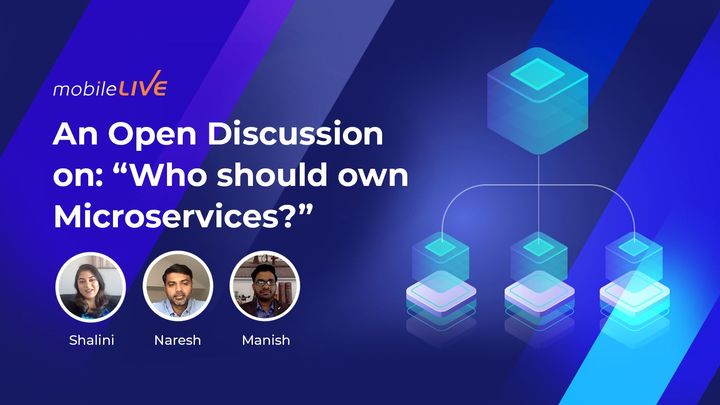For your convenience, here is the full transcript of the Q&A between Naresh Babu – Director, Engagement Practice and Uzi Murad – Account Executive.
Uzi Murad: Hello and welcome, I’m Uzi Murad and here with me today is Naresh Babu, head of strategy and architecture at mobileLIVE. Hey Naresh.
Naresh Babu: Hi Uzi.
Uzi: These days we see more and more enterprises adopting Multi-Cloud strategy. In fact, a recent survey by IBM showed that about 85% of executives are saying that they’re already running Multi-Cloud, or will be moving there within the next three years. So what we want to understand today is what’s driving organizations to the Multi-cloud strategy, and what are some of the challenges they are facing. But before we dive into the details there, Naresh, can you explain what we mean by Multi-Cloud?
Naresh: Yeah. A Multi-Cloud strategy is just utilizing, I would say, two or more public or private clouds, for example, let’s say, you are utilizing AWS or GCP, or Azure and AWS, we can call it as a Multi-Cloud.
Uzi: I see. And is that strategy a good fit for any type of enterprise?
Naresh: So I would say Multi-Cloud strategy is a right fit for larger enterprises, because of the cost and complexity of running and maintaining it. For small to medium organizations, I would recommend Hybrid Cloud as the option.
Uzi: And what does Hybrid Cloud mean?
Naresh: Yeah. So, when you are running a local data center, and then you’re extending some services or a replication of that into a public cloud, you can call that as a Hybrid cloud. But there is terminology, something like Hybrid-Multi Cloud where there is a local data centre as well as more than two or three public clouds. So the combination of that is called Hybrid-Multi Cloud.
Uzi: I see. So, definitely doesn’t sound trivial, I wonder what’s driving so many enterprises in that direction. I know many of them have the dual vendor strategy, they want increased competition, keep the cost down, but is that really what it’s all about?
Naresh: Yeah. I would say yes. There are multiple drivers for the organizations and from my perspective, I would say it’s really the flexibility for picking the services, one versus the other. Let’s say for example, if you are in AWS and Azure, is AWS Lambda better versus Azure Functions? Or the second aspect I would say, is from the security aspect, where it’s very hard to bring down a Multi-Cloud environment using a denial-of-service-attack or DDOS attack, I would say. And the third aspect, I would say is data recovery or disaster recovery where you can create the most reliable architecture which can reduce a single point failure as well.
Uzi: So I’m hearing: ability to do best of breed, improve the security, and finally disaster recovery and availability.
Naresh: I would say, yes, yep.
Uzi: So what are some of the top challenges that we are facing when implementing Multi-Cloud strategy?
Naresh: Yes, so, when it comes to any new technologies, there are a lot of challenges. So when you talk about Multi-Cloud, i would say it’s still evolving, and organizations are already into it, but one of the key challenges is that there is no industry standard in terms of giving architecture guidelines or principles or best practices to be implemented. There are not many tools in the market that can help support or monitor the Multi-Cloud environment. And when it comes to provisioning, deploying and testing of it, you don’t see much tools as well. So from an application standpoint, I would say, one of the problems is identity brokering in the Multi-cloud environment, where each service provider might use their application to identify the request and response.
Uzi: I see. So you mentioned identity brokering, what do you mean by that?
Naresh: Yes. So let me give you an example. So when you are running an application for example in a local data centre, which has typically been authenticated by an active directory, and this has to contact or receive some information from your AWS file system, let’s say for example. AWS, on the other hand, uses IM service, which is identity management service to authenticate any request that is coming in. So how do you translate an AD token or AD authentication to automatically authenticate in AWS is called identity brokering.
Uzi: I see. So what would be your recommendation to enterprises that are implementing the Multi-Cloud strategy?
Naresh: Yeah. So I would say I can see in the industry there is a new adoption, it’s called infrastructure as code, which is one of the ways that you can convert doing admin tasks in terms of, from provisioning, to deploying, configuring, testing the virtual machines, creating containers, deploying containers, creating serviceless functions, deploying them: all of that can be considered as a code and this code can be run by anybody. Which typically what I’m trying to explain is an automated CI/CD pipeline spanned across a Multi-Cloud environment.
Uzi: You mentioned tools, you said there are not too many tools out there. So are there any tools, and can they do the Multi-Cloud management?
Naresh: Yeah, so, I’ve come across very few tools in terms of Multi-Cloud management, one would be Flexera, the other one would be Embotics, so I would say they are somewhere closer in terms of managing Multi-Cloud environments. And then there is another tool which again is being more famous is IBM Cloudpark, and people are mostly using it for data insights. And I’m thinking that if we can use, there is a tool called Terraform, if you can combine Terraform with Ensemble, which can act as a great IT automation tool, that can automate most of the IT tasks in terms of public as well as private cloud. I would say there is still a huge demand from enterprises to come up with a holistic platform that can allocate the workload strategy, at the same time managing the business containers in this hybrid Multi-Cloud environment. Still we have yet to see a unified tool that would act as a unified management platform.
Uzi: So that unified infrastructure management tool, that’s what we really need?
Naresh: I would say yes.
Uzi: And do you see any of the major cloud providers coming out with this tool any time soon?
Naresh: Yeah, why not right? I can see everyone is trying to get there, there’s a lot of third-party tools that are coming up. And definitely Azure and AWS have already implemented tools to have Hybrid Cloud management, and nothing is stopping from making a Multi-Cloud management platform, or unified infrastructure management platform.
Uzi: Thank you Naresh and thanks everyone for joining us.
Naresh: Thanks Uz



